
Underdog technologies gain ground in quantum-computing race
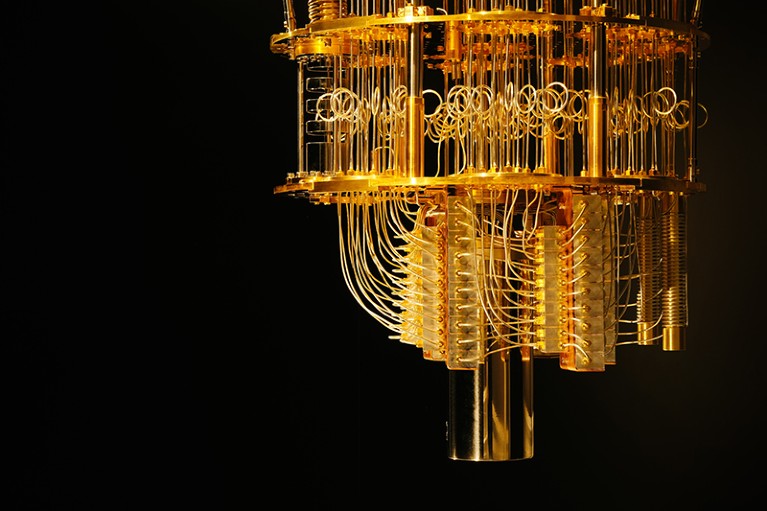
IBM’s quantum-computing method has a cryostat at its centre to cool the quantum chip.Credit: IBM
The race to develop sensible quantum pcs may be getting into a new stage. Some of the front-runner technologies are now experiencing sizing constraints, and many others are fast coming up from behind.
For yrs, two primary methods have enabled physicists to make progress partly by cramming units with additional and much more qubits, the quantum equal of a computer’s memory bits. One particular of those approaches encodes qubits as currents operating on superconducting loops. The other takes advantage of enthusiastic states of person ions trapped in a vacuum by electromagnetic fields.
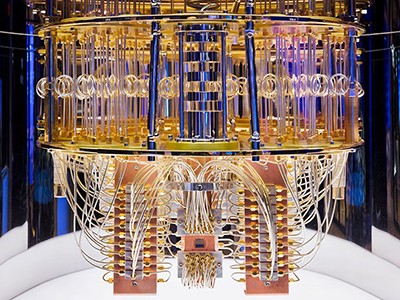
First quantum laptop to pack 100 qubits enters crowded race
But in the past two yrs, qubits that consist of single neutral atoms — as opposed to ions — and are held with ‘tweezers’ created of laser gentle have quickly develop into aggressive. And other procedures that are at an even previously phase of progress could still capture up.
“Superconducting qubits and trapped-ion qubits have completed the most-superior experiments, with the most qubits underneath management,” suggests Barbara Terhal, a theoretical physicist at QuTech, a quantum-analysis institute at the Delft University of Technologies in the Netherlands. “However, this is no assure that these platforms will stay in the lead.”
The quest for qubits
Quantum pcs promise to resolve problems that are out of arrive at for classical equipment by harnessing phenomena this sort of as quantum superposition, in which an item can exist in two simultaneous states — spinning both of those clockwise and anticlockwise, for instance. Physicists contact such states qubits to distinguish them from ordinary bits, which can be only ‘0’ or ‘1’.
Quantum states are notoriously fragile. In a quantum laptop or computer, the data they have — which can lengthen throughout quite a few qubits to type ‘entangled’ states — tends to degrade or get shed as a calculation progresses. To protect the states for as extensive as doable, qubits should be saved isolated from the setting. But they cannot be far too isolated from a person a different for the reason that they should interact to accomplish calculations.
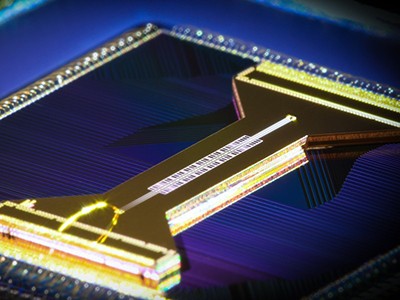
Quantum laptop race intensifies as substitute technologies gains steam
This — among other factors — can make constructing a handy quantum laptop is hard. But the subject has appear further than QuTech director of research Lieven Vandersypen would have expected 10 many years ago. “The progress is in fact amazing.”
Google manufactured headlines in 2019 when it claimed that a machine built of 54 superconducting qubits experienced carried out the first quantum computation that would have taken impossibly prolonged on a classical pc, an achievement that scientists get in touch with quantum benefit. The know-how business IBM, which has invested intensely in superconducting qubits, expects to arrive at a milestone in the subsequent couple of months, when it will unveil a quantum chip named Condor, the to start with to breach the 1,000-qubit barrier.
Very last November, the business announced its preceding chip, the 433-qubit Osprey — a observe-up to the 127-qubit Eagle, which set a record in 2021. “We actually needed to lay a road map like you would hope from the semiconductor market,” suggests Jerry Chow, who sales opportunities the quantum-laptop or computer programme at the IBM Thomas J. Watson Investigate Center in Yorktown Heights, New York.
Quality and quantity
Chow states that IBM’s goal is not only to scale up the number of qubits, but also to increase their high quality. Some of the company’s superconducting elements can keep their quantum states for additional than 300 microseconds, he states — a report for the technological innovation. In a further crucial measure, 99.9{5376dfc28cf0a7990a1dde1ec4d231557d3d9e6448247a9e5e61bb9e48b1de73} of functions involving two qubits are now mistake-absolutely free.
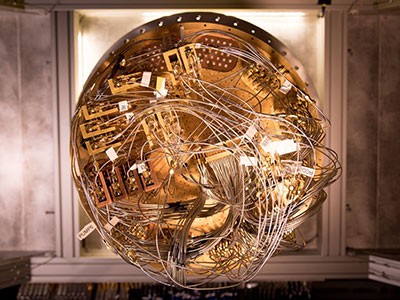
Further than quantum supremacy: the hunt for beneficial quantum computers
Scaling up gets to be impractical once the variety of superconducting qubits on a chip goes much beyond 1,000, mainly because just about every qubit desires to be independently wired to exterior circuits for handle and readout. IBM will consequently acquire a modular solution. Commencing in 2024, every single further more move on its road map will goal not to maximize the variety of qubits on a chip, but to url numerous chips into one machine — one thing that is not straightforward if the relationship has to carry the quantum states unharmed or assistance to entangle qubits on different chips. The chips are at the hearts of huge contraptions encased in cryogenic systems that retain the chips shut to kelvin.
Trapped-ion computer systems could have even far more-stringent dimension constraints than superconducting ones, partly mainly because they need a different laser machine to regulate each individual ion. Typically, that has meant restricting the traps to rows of all-around 32 ions for each chip. But IonQ, a commence-up business spun off from the University of Maryland in School Park, suggests its technique permits it to pack a number of rows of ions into a single chip, most likely achieving as many as 1,024 qubits. To go beyond that, IonQ also ideas to shift to a modular method, connecting several chips. In laboratory experiments, trapped ions have reached fidelities as substantial as 99.99{5376dfc28cf0a7990a1dde1ec4d231557d3d9e6448247a9e5e61bb9e48b1de73}, in accordance to a spokesperson for the corporation.
Tweezer tech
A different approach — which, right up until a several many years in the past, was barely on the radar — may well quickly break the 1,000-qubit barrier as very well. It traps neutral atoms making use of tightly concentrated laser beams, called optical tweezers, and encodes qubits in the digital states of the atoms or in the spins of atoms’ nuclei (see ‘Laser tweezers’). The technique has been creating step by step for additional than a 10 years, but now it’s “booming”, says Giulia Semeghini, a physicist at Harvard College in Cambridge, Massachusetts.
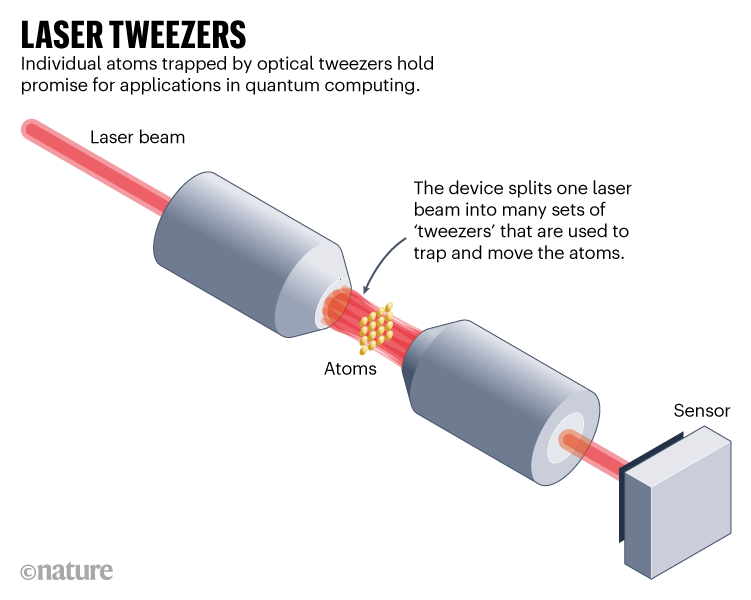
Resource: Ref. 1
To assemble many qubits, physicists split a single laser beam into numerous, for case in point by passing it by a display screen produced of liquid crystals. This can generate arrays of hundreds of tweezers, just about every trapping their individual atom. The atoms are generally a few micrometres away from their neighbours, wherever they can persist in a quantum point out for many seconds or more. To make the atoms interact, physicists place a separate laser at just one of them to tickle it into an excited condition, in which an outer electron orbits a great deal farther absent from the nucleus than ordinary. This boosts the atom’s electrostatic interactions with a neighbour.
Employing tweezers, researchers have crafted arrays of a lot more than 200 neutral atoms, and they are speedily combining new and existing approaches to change these into thoroughly operating quantum computer systems.
A person key edge of the method is that physicists can merge several types of tweezers, some of which can shift around promptly — with the atoms they carry. “Every time you want two of them to interact, you bring them collectively,” says Harvard physicist Dolev Bluvstein. This tends to make the method far more flexible than other platforms this kind of as superconductors, in which just about every qubit can interact only with its direct neighbours on the chip. A workforce such as Semeghini and Bluvstein demonstrated this adaptability in an April 2022 paper1.
The tweezer-dependent qubits must shortly be 99{5376dfc28cf0a7990a1dde1ec4d231557d3d9e6448247a9e5e61bb9e48b1de73} mistake-absolutely free, whilst additional advancements will acquire significant do the job, Semeghini claims.
The speed of enhancement in neutral atoms has stunned the quantum-computing neighborhood. “The route to scale to thousands of atomic qubits is obvious and will possible occur within two many years,” states physicist Chao-Yang Lu at the University of Science and Know-how of China (USTC) in Hefei.
Spin management
Other qubit technologies are still in their infancy, but advancing steadily. A person process encodes details in the spin of specific electrons trapped by electric powered fields inside of common semiconductors such as silicon. Past calendar year, Vandersypen and his collaborators shown a entirely performing six-qubit machine of this form2. As in the situation of optical tweezers, the electron spins can be shuttled all over the gadget to provide them following to other people on desire. But just like other forms of qubit, a important trouble is preserving the spins from influencing just about every other when they are not intended to, in what physicists contact crosstalk.
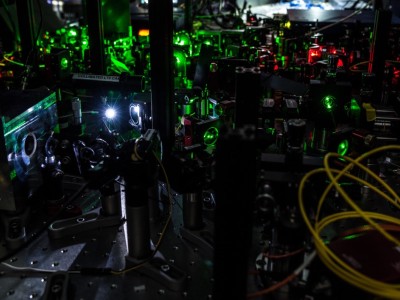
Quantum network is stage to ultrasecure net
The profit of semiconductor-dependent qubits would be the capability to make chips in the same kind of factory where present-day computer chips are developed, whilst a workforce led by physicist Michelle Simmons at the University of New South Wales in Sydney, Australia, assembles the equipment atom by atom working with the tip of an automatic scanning tunnelling microscope. “Everything is patterned with sub-nanometre precision,” she says.
Nonetheless one more technique is continue to at the conceptual phase, but it has acquired substantial financial investment, by Microsoft in individual. The strategy aims to exploit ‘topological states’ to make qubits sturdy to degradation, just like a knotted string that can be twisted and pulled but not untied. In 2020, scientists noticed the primary physical system for one kind of topological safety, and they are now performing on demonstrating the very first topological qubits.
“Every system that is pursued nowadays has some guarantee, but producing it can have to have really novel strategies that you can not predict,” states Vandersypen. Pan Jian-Wei, a physicist who operates on multiple quantum-computing methods at USTC, agrees. When it arrives to the race to build quantum pcs, “it is continue to way too early to say which applicant will win”.
